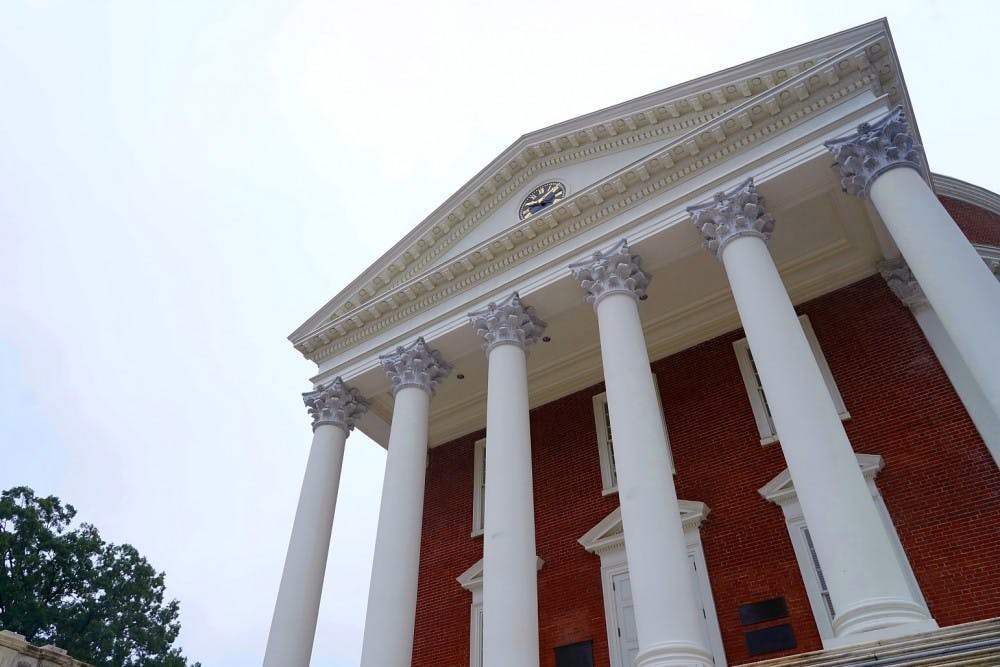The University is considering increasing undergraduate tuition between 2 and 3.5 percent for the next academic year, according to a Board of Visitors notification released earlier this month.
Under the proposed plan, students in the College of Arts and Sciences would see an increase on their annual tuition bills between $342 and $410. Similar increases would apply for students in the Curry School of Education, School of Architecture and School of Continuing and Professional Studies. Students in the Nursing, Commerce, Batten and Engineering Schools would see similar tuition increases but only for returning students.
The proposed tuition increase for next year will be the fourth consecutive year that rate increases will remain at or below the rate of inflation for most in-state students.
These increases are similar to those that students have seen for the past several years. In 2016, tuition increased 1.48 percent; in 2017, It was 2.18 percent; and in 2018, it was 2.4 percent. Since 2012, tuition increases have hovered between 1.5 percent and 4.5 percent.
“I know that tuition has always increased every year, and I don’t know if this is way more of an increase by comparison,” second-year College student Anila Tynan said. “But I feel like it could be problematic, especially for out-of-state students.”
Fourth-year College student Joshua King said he does not like the tuition increase.
“I don’t think U.Va. needs to raise the tuition,” King said. “A very small percentage of U.Va. funding comes from tuition. It comes from alumni and organizations giving donations. They’re just doing it out of greed.”
Approximately one-third of the University’s revenue comes from tuition and fees. Another third comes from research sponsored by external groups and outside gifts. The remainder comes from state appropriations, distributions of income from the University’s endowment and various services provided by the University.
In an interview with The Cavalier Daily, University Vice President for Finance Melody Bianchetto shared how annual increases in University operating expenses contributes significantly to raising tuition, as well as expenses for utilities.
“[Increases] in operating expense every year is one of the biggest drivers,” Bianchetto said. “We also see increases in utilities. Our water bill in particular is going up 40 percent. Library materials, those kinds of normal operating increases.”
Bianchetto also expanded on how revisions to curricula offered in the College — such as the recent creation of New Curriculum and the Forums — can contribute to higher costs. Offering higher level classes also raises costs.
“If you think about the difference between a 1000 level course and a 4000, you've generally got smaller classes,” Bianchetto said. “You're more likely to have a tenured faculty member, often very experienced in their field. A lot more cost.”
Tuition increase would have a greater impact on out-of-state students. For in-state students, tuition would increase by a maximum of three percent. For out-of-state students, tuition would increase by 3.5 percent. During the 2017-18 school year, tuition increased by 3.5 percent for out-of-state students and 2.2 percent for in-state students.
The Board’s notice emphasized a continued commitment to providing assistance to meet all students’ financial needs through the University’s financial aid program, AccessUVA. Restating University President Jim Ryan’s pledge at his inauguration, the Board committed to ensuring “that Virginia families with an income of $80,000 and less with typical assets will receive free tuition and fees, while Virginia families with an income of $30,000 and less with typical assets will receive free tuition, fees, room, and board.”
While Ryan’s promise was new, the actual changes to the financial aid process are unclear.
The proposal also includes a $120 to $200 increase in non-E&G fees, or non-academic student fees. The revenues from the increase would go toward the operating costs for a new student health facility. A $100 million project, the Student Health and Wellness Center is slated for completion in 2020. The University has committed to funding $30 million for the new facility, and the rest would be levied through fundraising.
The Board is also considering a proposal to implement an upper-division tuition rate for all in-state and out-of-state third- and fourth-years in fall 2021. This new tuition bracket would increase annual rates by between 4.5 and 5 percent for third- and fourth-year students. With increased tuition revenue, the Board plans to expand and strengthen academic programs. Additional course offerings in high-demand areas, investment in faculty, curriculum innovation and greater research opportunities will be boosted through the new funding bracket.
The Board of Visitors is scheduled to vote on the tuition proposals Dec. 7. Until then, students and the public are able to comment on the proposals by contacting respond_uva_tuition@virginia.edu.
Spencer Culbertson contributed to the reporting of this story.
This story has been updated with information from an interview with University Vice President for Finance Melody Bianchetto.







